Speaking of swords made by Great Sōshū masters, we cannot help mentioning the name of another great master, Daishinbō Yūkei (大進坊祐慶—sometimes, we can find another variant that reads Daishinbō Sukeyoshi). He bore the priest name Yūkei Hōshi (祐慶法師), he also worked in the late Kamakura period, and his works were closely associated with Yukimitsu’s activity. According to data from old archives, horimono on Yukimitsu’s and Masamune’s blades were engraved mainly by Daishinbō. In old Hon’ami records (Teiryo Yoji, by Hon’ami Kōson, 1984, collected using old clan records obtained by Hon’ami Ringa from his wife), it is said that Daishinbō was a son of Yukihira and the father (or the brother) of Yukimitsu. This gives us another confirmation of the version that states the latter was a descendent of the Yukihira line (could be found in old manuscripts). Paying attention to the name of Sadayoshi (定慶) in this genealogy line we easily to connect it with a process of forming Yūkei/Sukeyoshi name.
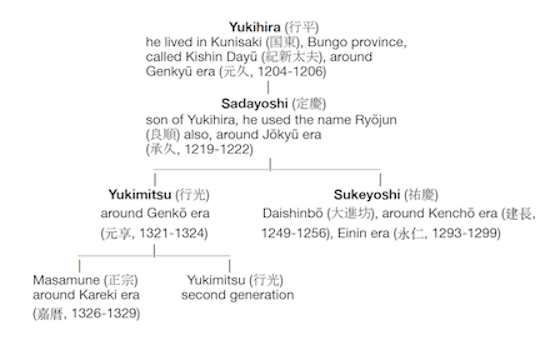
Figure 1. Yukihira genealogy line.
The Kotō Meizukushi Taizen tells us that Daishinbō was born in the 5th year of the Kenkyū era (建久, 1194) and died in 131st year of his life in the 1st year of the Shōchū era (正中, 1324). Such a long life span seems somewhat implausible. Most likely, his year of birth was recorded erroneously and should be Kenchō (建長, 1249), rather than Kenkyū—that is, 建長, instead of 建久. Thus, most probably, the dates of Daishinbō’s life were 1253–1324. In this case, the years of his life are comparable to those of Yukimitsu and Masamune. The same source tells us that beginning at the age of 5, he lived in the monastery of Nikkō (日光), and, at age 35, he entered the priesthood. During the Jōei era (貞永, 1232–1233), he became a smith. Thus, we can assume that he was one of the monk-smiths mentioned in various chronicles.
Figure 2. Kotō Meizukushi Taizen (古刀銘盡大全), Volume 2, p.12/1.
The Kiami-bon Mei-zukushi (喜阿弥本銘尽) considers Daishinbō another son of Shintōgo Kunimitsu, an elder brother of Yukimitsu, and an engraver who was unrivalled in his craftsmanship. The Nōami Hon Meizukushi (能阿弥本銘尽) also calls him the best Japanese engraver of all time. It is believed that horimono made by Daishinbō, even on blades of the great masters, increased their price by 30 to 50 percent. The Tōken Kantei Hikketsu (Volume 3 [6], p. 25) tells us that Shintōgo himself learned the skill of engraving from Daishinbō. Many old sources have preserved Daishinbō’s Buddhist name: Kuniyasu (國泰). It is written using the same kanji as the name of Shintōgo’s third son, and this suggests that we are speaking about the same smith. According to some sources, he was a wandering monk from the high mountain monastery of Haguro (羽黒), in Dewa Province, and he settled in the monastery of Nikkō (日光) at the end of his life. Fujishiro Yoshio adds that Daishinbō was also a smith whose works have not survived.
This is not quite true, because now there are three of his works: a yari signed “Daishinbō” (大進坊) [it is necessary pay attention on the fact that this sword has attribution as: to mei ga aru - と銘がある], Jūyō No.19; a tantō with origami written by Hon’ami Kōjō (本阿弥光常), Jūyō No. 50; and a tantō that was owned by the clan of Shimazu, Jūyō No. 22. According to the information presented in the Kotō Meizukushi Taizen, Daishinbō made swords very rarely, in exceptional cases. Therefore it is not possible to make a finale conclusion about authentic character of the surviving swords with NBTHK attribution as Daishinbō. An examples of Daishinbō’s inscriptions one can found in old oshigata books.
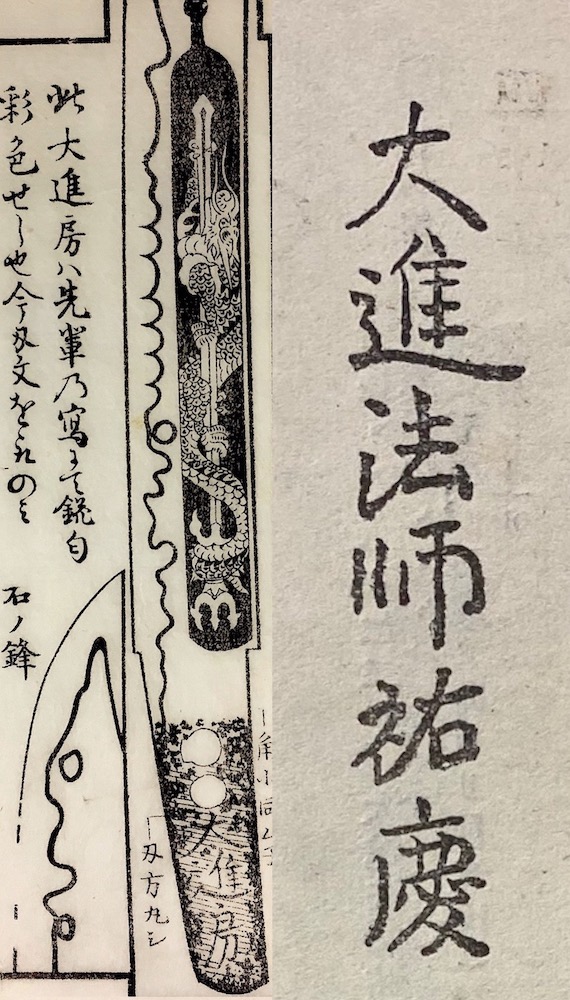
Figure 3. Honchō Kaji Kō, 1795, Volume Ram, p. 10/2.
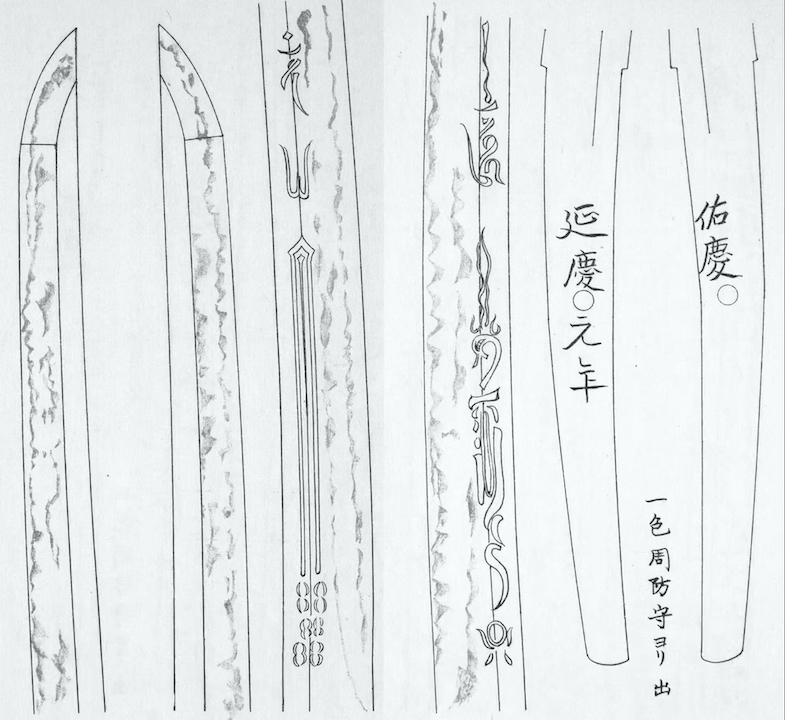
Figure 4. Kōon Oshigata (光温押形).
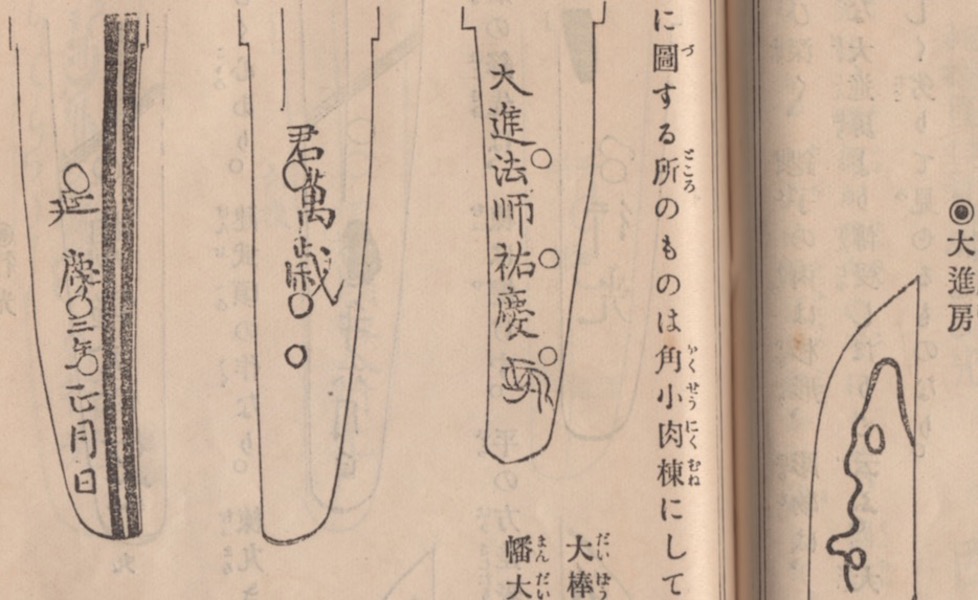

Figure 4. Tōken Kantei Hikketsu (刀剣鑑定秘訣), 1905, Volume 3(6), p. 26-27.
To date, there is no answer to the question of which engravings are works by Daishinbō and which features rendered these engravings so distinctive. Therefore, arguing that Daishinbō was, first of all, an engraver, we can rely only on common opinion. Horimono of the Kamakura period survived in poor condition because they were subjected to frequent polishing. However, it is generally accepted that some engravings on works by Yukimitsu and Masamune (and, sometimes, by Sadamune) are so carefully executed and crafted, featuring fine artistic taste and exceptional craftsmanship, that maybe they were really made by Daishinbō.
Examples of the engravings probably made by Daishinbō:
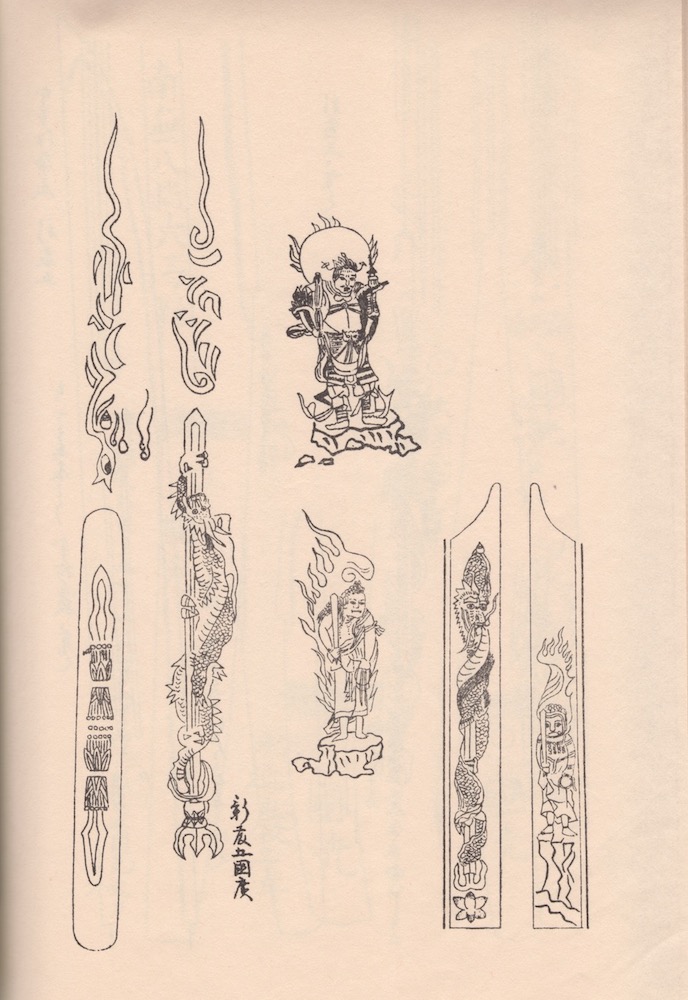
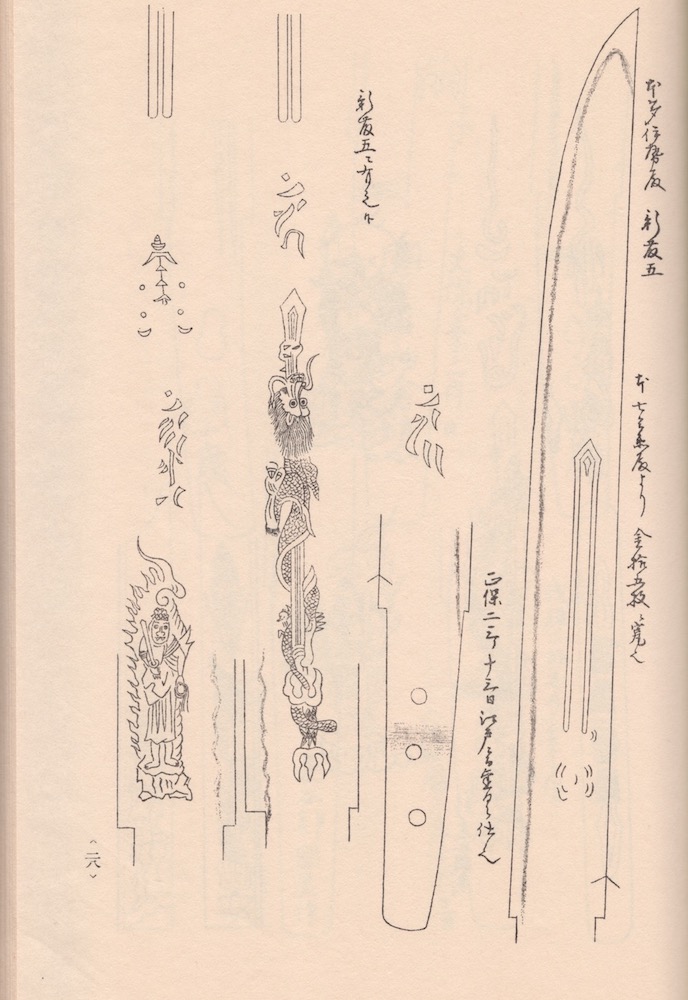
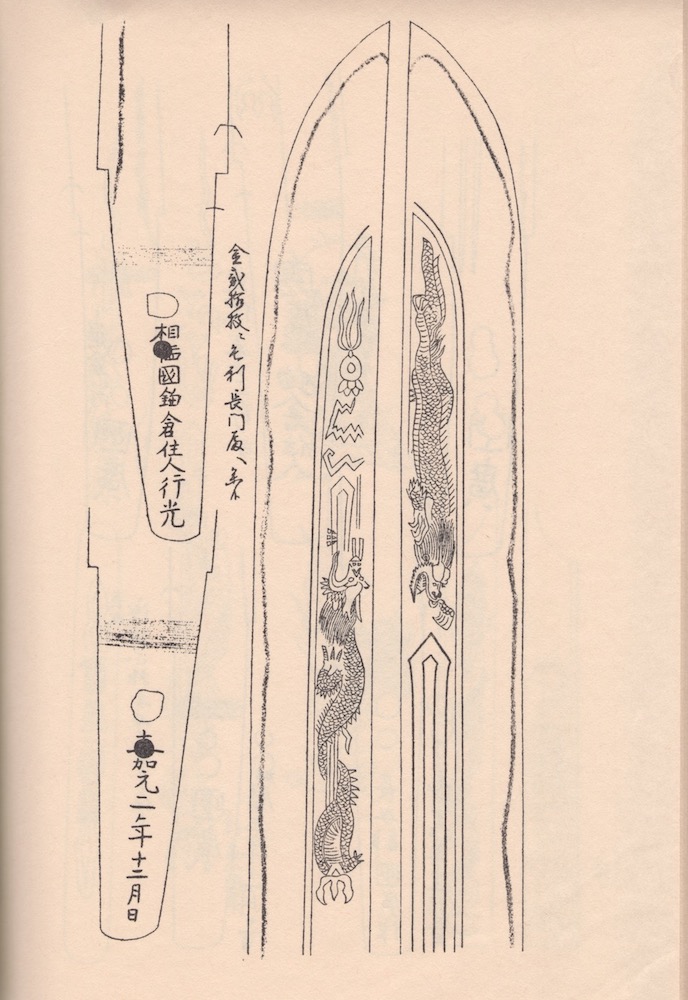
Original content Copyright © 2020 Dmitry Pechalov